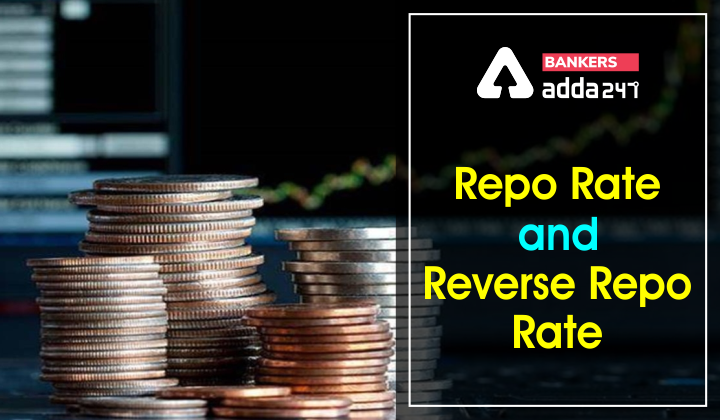Table of Contents
Repo Rate and Reverse Repo Rate: The Repo Rate and Reverse Repo Rate are decided by the monetary policy committee (MPC), headed by the Governor of the Reserve Bank of India (RBI). The decision is taken in the bi-monthly meeting of the committee. The governor of RBI controls the monetary policy decisions with the support and advice of the internal monetary policy committee (MPC) members and the technical advisory committee. Both the rates are decided by RBI on the bi-monthly monetary policy committee. The Repo rate helps to control the inflation in the market and the reverse repo rate, on other hand helps to control the supply of money in the market. In this article, we have provided details of the Repo rate and Reverse Repo Rate.
What is Repo Rate?
Repo rate is the interest charged by the Reserve Bank of India (RBI) when commercial banks borrow from them by selling their securities to the central bank. Essentially it is the rate at which RBI lends money to the commercial banks. This instrument is used by the commercial banks when they have a shortage of money or the demand of loans is more than their capital with them. So in order to meet the demand of the market, commercial banks can use repo rate instruments to get capital from RBI. The Repo rate instrument is also used to control Inflation by RBI. Whenever there is excess money in the market, RBI will increase the repo rate to absorb that extra money and control inflation.
Example of Repo Rate: Repo rate is much like commercial banks charge interest from its customer for home or car loans.
What is Reverse Repo Rate?
The Reverse Repo Rate is defined as the rate at which the Reserve Bank of India (RBI) borrows money from banks for the short term. We can also consider that the reverse repo rate is just an instrument through which RBI parks the excess money deposit with the commercial banks. The reverse repo rate is always low as compared to the repo rate because discourages banks from parking their amount in RBI. The reverse repo rate helps the RBI get money from the banks when it needs. In return, the RBI offers attractive interest rates to them.
Example of Reverse Repo Rate: When Banks generate excess funds, they may deposit the money in the RBI for extra profite.
Difference between Repo Rate and Reverse Repo rate
The repo rate and reserve repo rate both are decided by the monetary policy committee (MPC), headed by the RBI Governor. Here we have provided the difference between repo rate and reverse repo rate. Candidates can check in the given table.
| Repo rate | Reverse Repo rate |
| The Repo rate is the rate at which RBI lends money to commercial banks. | The Reverse Repo rate is the rate at which RBI borrows money from commercial banks. |
| It is always higher than the reverse repo rate. | It is kept at a lower rate than the repo rate. |
| It is used to control inflation and deficiency of funds. | It is used to manage cash flow. |
| It is used to fulfill the deficiency of funds. | It is used to manage liquidity in the economy. |
| Current Repo Rate: 4.40% | Current Reverse Repo Rate: 3.35% |
| The Repo Rate helps the RBI to control inflation. | The Reverse Repo Rate helps the RBI to control the money supply. |
FAQs: Repo Rate and Reverse Repo Rate
Q1. What is the current Repo Rate?
Ans. The current repo rate is 4.40%.
Q2. What is the difference between repo rate and reverse repo rate?
Ans. Candidates can check the difference between repo rate and reverse repo rate in the given above article.
Q3. Who decides Repo Rate and Reserve Repo Rate?
Ans. The repo rate and reserve repo rate are decided by the monetary policy committee (MPC), headed by the RBI Governor.





 GA Capsule for SBI Clerk Mains 2025, Dow...
GA Capsule for SBI Clerk Mains 2025, Dow...
 The Hindu Review October 2022: Download ...
The Hindu Review October 2022: Download ...
 SBI PO Mains Admit Card 2025 Out, Downlo...
SBI PO Mains Admit Card 2025 Out, Downlo...





